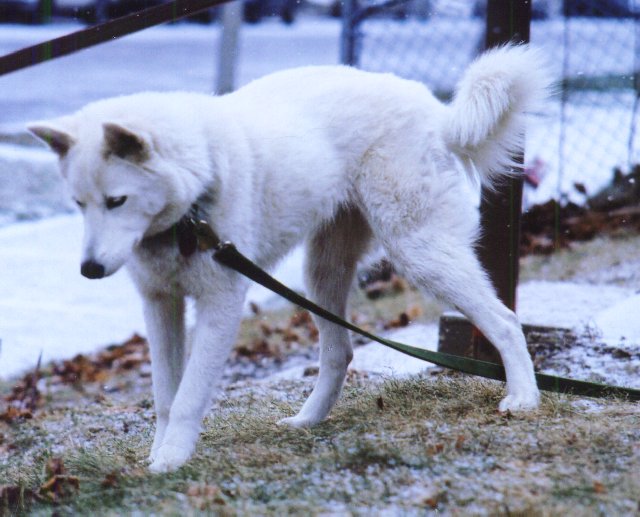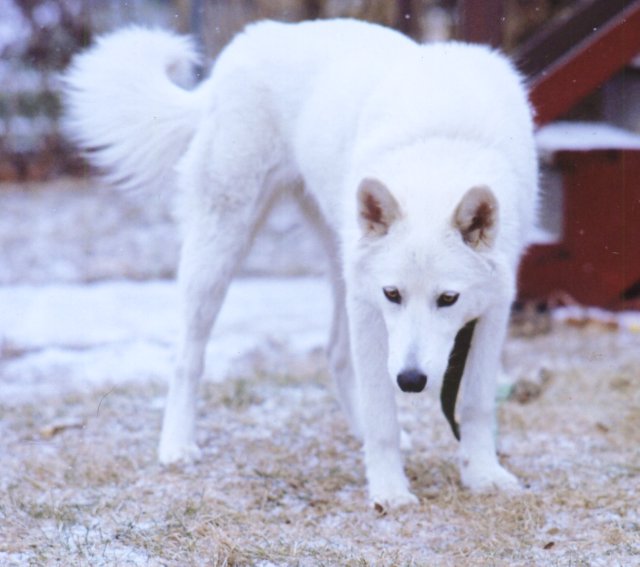December 26, 2004
Intelligent Design
Dean Esmay linked to an article which describes the genomic mechanism which appears to explain how various breeds of dog evolved. I've read about these tandem repeat sequences before, and it appears that they function as a mechanism for facilitating mutation. Setting aside any discussion of an Architect of this miraculous system, it is clear that tandem repeat sequences allow evolution to function far more quickly. A mutation which causes, say, hemophilia, will never become common enough for the pattern to extend itself, and if a mutation were to arise causing shemophilia it would never propagate at at all, but a favorable mutation of a tandem repeat sequence lays the groundwork for more of the same.
Wolves distrust novelty, and would not normally choose to mate in the wild with a canine with floppy ears or spotted fur. They would never think to choose a mate for bloodline or herding behavior. It is only after humans became involved that the process of unnatural selection began. I had heard about a research project involving domesticated foxes, and the Glittering Eye happens to have found a description. If one were so inclined, the rapidity with which the foxes undergoing unnatural selection evolved the characteristics of domesticated animals could be taken as evidence that the Creator of evolution intended to give mankind dominion over the wild beasts of the land. One thing which is not so subject to debate is that the more one's dog differs from a wolf, the more intelligent design on someone's part (perhaps, for example a German butcher from Rottweill), was involved.

